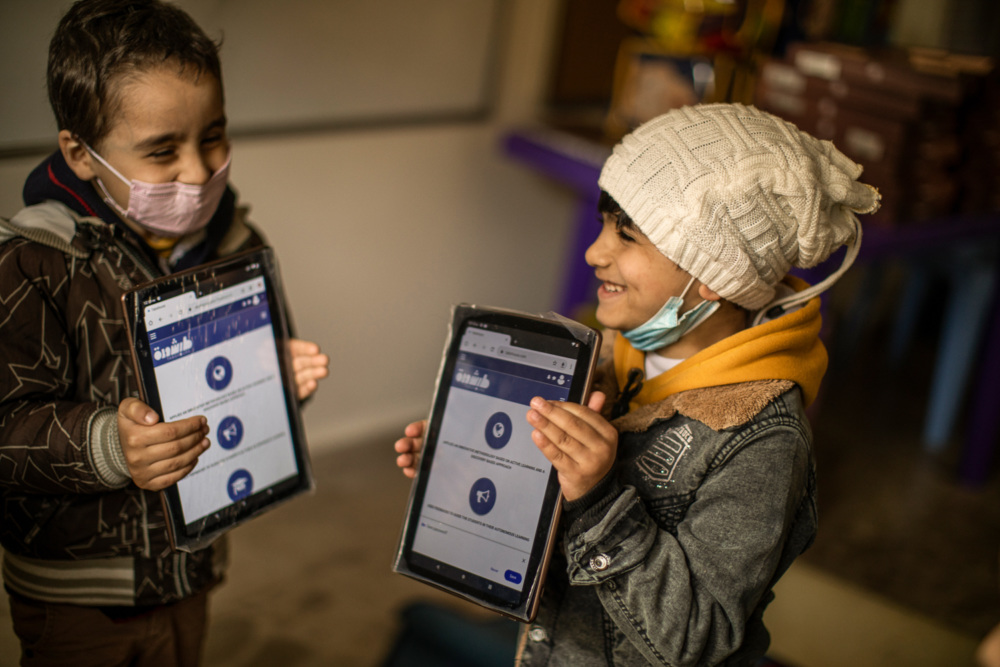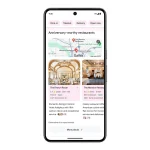Discover how education technology like online courses, virtual reality, and AI are making learning more accessible, engaging, and effective for students around the globe.
Education technology has introduced new models and methods that are transforming how students learn. From artificial intelligence to virtual reality, emerging innovations offer immense potential to make education more accessible, engaging, and effective for learners globally.
How Technology is Transforming Education and Improving Learning
Technology has revolutionized nearly every aspect of modern life – and education is no exception. From online courses to adaptive learning software, technology is rapidly changing how students learn and teachers teach. For many, tech-enabled learning is making education more accessible, engaging, and effective.
The Promise of Educational Technology
The rise of technology in the classroom has unlocked new opportunities to deliver high-quality education around the world. As the provided content highlights:
“Technology can deliver new educational opportunities for everyone. It offers huge opportunities to transform global education at all age levels.”
Some key statistics show the expanding reach of technology globally:
- 2.7 billion people use the internet
- 6.8 billion have access to mobile phones
- 56% will have internet access by 2020
This level of connectivity allows students from even the most remote areas to access educational content. As Strive Masiyiwa of the Education Commission stated:
“We have extraordinary tools at our disposal today to democratise education so that a child in the deepest part of rural Africa could be getting the same education as a child in Manhattan.”
Additionally, the amount of online educational content is rapidly increasing. For example, the number of online courses nearly doubled in 2015 alone. This creates more opportunities for personalized and self-directed learning.
Clearly, technology is making education more globally accessible and abundant. But how exactly is it being used to facilitate learning?
How Digital Tools Enhance Teaching and Learning
Education technology comes in many forms – from hardware devices to software programs. When effectively implemented, these tools can transform traditional instruction and create more engaging, collaborative, and productive learning environments.
For example, in classrooms around the world, students and teachers are using:
- Computers and tablets – To access educational content, collaborate on group projects, and submit assignments digitally
- Smart whiteboards – To display interactive lesson materials and annotation tools
- Virtual reality headsets – To go on immersive virtual field trips and interact with 3D models
- Video conferencing software – To connect physical classrooms with virtual experts or classrooms abroad
Research shows combining traditional and technology-based teaching, knows as “blended learning,” is particularly impactful. This approach caters to different learning styles and expands learning beyond the classroom.
These technologies enable more self-directed, peer-to-peer, and experiential learning opportunities. Features like real-time collaboration, digital annotation, interactive simulations, and instant formative feedback also aid student comprehension and engagement.
According to data from Education Week, students in schools with 1:1 technology programs outperform their peers on state tests. Properly implemented educational technology has been linked to improved:
- Literacy skills
- Numeracy skills
- Engagement
- Collaboration
- Critical thinking
- Career readiness
While hardware and software are important tools, equally crucial is providing educators with effective training on integrating technology into instruction, curriculum, and assessment.
Overall, ed tech expands how, when, and where learning happens – creating more equitable access to high-quality education globally.
Online Learning Platforms Expand Access to Education
In addition to enhancing traditional K-12 and higher education, educational technology has enabled entirely new models of teaching and learning through online platforms. These include:
Massive Open Online Courses (MOOCs)
- Provide free online courses open to anyone around the world
- Top providers include Khan Academy, Coursera, and Udacity
- Offer courses in almost every subject, from coding to ancient history
Virtual Schools
- Deliver grades K-12 curriculum completely online
- Teachers facilitate self-paced lessons and interact with students virtually
- Enables education for remote students or those with specialized needs
Adaptive Learning Apps
- Digital tutoring programs that adapt to students’ unique strengths and weaknesses
- Monitors student performance data and customizes lessons accordingly
- Often gamified to improve engagement and motivation
The accessibility and personalization enabled by these platforms allows students to direct their own learning pathways – mastering subjects at their own pace.
However, fully virtual environments also come with downsides, like less opportunity for peer interaction and relationship-building. As such, many advocate for blended models that thoughtfully combine online and in-person learning.
No matter the exact format, educational technology expands access to quality learning for all.
Emerging Technologies Transforming Education
Many exciting technologies on the horizon have experts predicting the future of education will look very different than traditional classroom models. Some emerging ed tech developments include:
AI and Machine Learning
- Gather detailed data on individual student strengths/weaknesses
- Provide real-time feedback and modify instruction accordingly
- Reduce repetitive admin tasks to allow more meaningful teacher-student interactions
Augmented and Virtual Reality
- Immerse students in interactive 3D environments
- Enable virtual field trips to otherwise inaccessible locations
- Game-based learning improves engagement and knowledge retention
Blockchain
- Securely store verifiable digital records of academic credentials
- Mitigate risks around forgery and hacking of transcripts
Integrating emerging technologies does come with challenges like managing screen time, ensuring data privacy, and addressing the digital divide. However, the future possibilities are boundless.
Technology Tackling Education Inequity
While educational technology has unlocked doors for many students, systemic barriers to access remain. These disproportionately affect marginalized populations.
Key issues contributing to the digital divide include:
- Device access: 1 in 3 households globally lack home internet access or computing devices. This prevents students from participating in online learning.
- Connectivity: Schools in remote/low-income areas often lack reliable broadband access. Only 34% of schools in East Asia have internet, for example.
- Digital literacy: Students without basic tech skills cannot utilize available digital learning resources.
- Infrastructure: Frequent power outages or lack of electricity prevent use of technology in some regions.
- Disabilities: Assistive devices and accessible formats are not universally provided.
However, innovative programs around the world aim to tackle each of these issues and help technology live up to its promise of providing quality education for all:
- 1Million Project – Partners with U.S. cell phone carriers to provide free high-speed internet to households for up to four years
- Online Deaf Educator Training – Teaches Indian educators how to instruct deaf students virtually
- BRCK Education – Rugged, battery-powered WiFi device brings connectivity to classrooms in Kenya
- World Computer Exchange – Refurbishes used computers from U.S. corporations to donate globally
“Technology today makes it possible for a child in rural Africa to get the same education as one in Manhattan. What’s missing is the will and resources. Because once we get the will, resources will follow.” As Strive Masiyiwa articulates, achieving education equality relies heavily on making technology access a priority. And providing teachers professional development opportunities on utilizing tech effectively and inclusively.
While barriers exist, technology paired with thoughtful implementation can mitigate many of the systemic issues preventing marginalized students from receiving a high-quality modern education.
The Role of Technology in Education Going Forward
Education has remained relatively unchanged for over a century. Yet the skills students need to thrive in the future look very different than in the past. Recent reports indicate that 65% of children entering school today will work in job types that do not even exist yet.
This uncertainty is why teaching foundational knowledge and transferable skills is so important. Subject mastery matters, but learning how to learn may matter even more. Self-direction, communication, creativity, and adaptability are essential no matter how industries evolve.
Here are some of the key ways technology can nurture these aptitudes:
- Online platforms enable students to direct their own learning pathways, working at their own pace to master skills.
- Digital creation tools like coding, video editing, and design build creative confidence.
- Virtual exchanges with peers abroad foster cultural awareness and language abilities.
- Comments and likes on digital projects provide rapid feedback to accelerate growth.
- Interactive content keeps students actively applying knowledge rather than passively receiving it.
While traditional modalities still have merit, education today is gradually shifting from a one-size-fits-all factory model to a more personalized, competency-based approach. New technologies make this feasible – allowing each student to receive the specific support they need to realize their full potential.
However, succeeding with this model requires quality teacher training on effectively leveraging technology. It also relies on addressing systemic barriers to access. Only then can tech truly democratize learning rather than exacerbating existing inequities.
Final Thoughts
Technology holds immense potential to transform education into a more engaging, effective, and equitable system for all. However, achieving this vision takes conscientious implementation focused on enhancing – not replacing – the vital relationships that drive human progress.
With thoughtful strategies, teacher training, and addressing barriers to access, technology can facilitate learning that propels every young person to lead happy, self-directed lives and make meaningful contributions to their communities.
We hope this overview has shown how technology is creating new opportunities in education. Please share your thoughts or questions in the comments, and check back soon for more articles on the future of learning.






